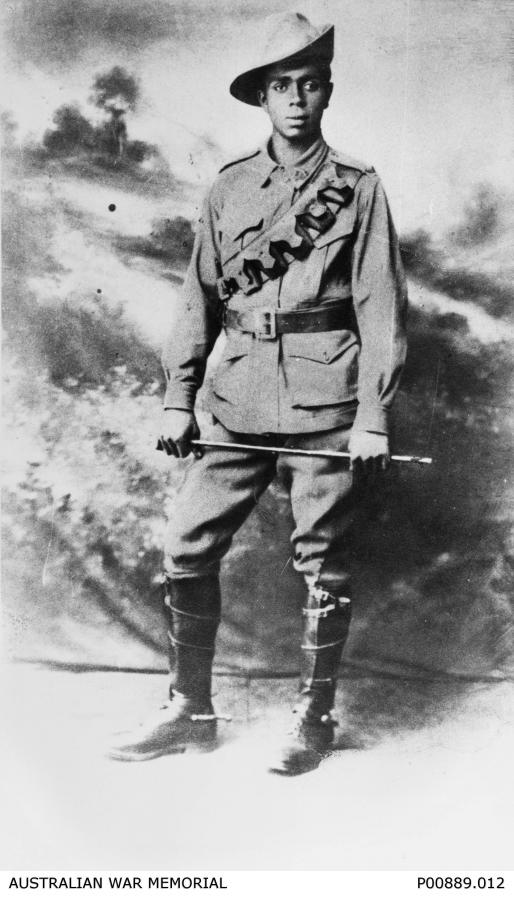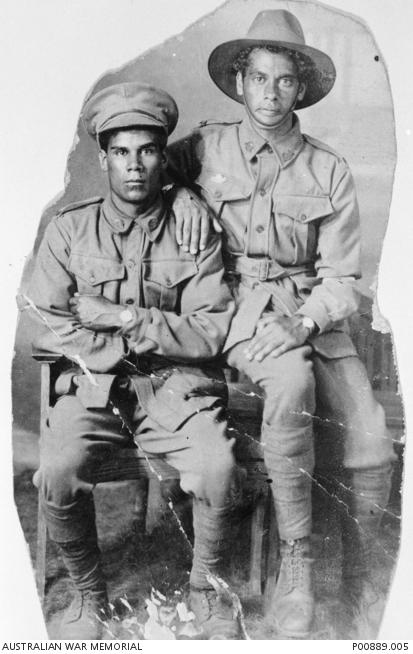Brothers in Arms and Aboriginal ANZAC Families
By Michael Bell
The Australian War Memorial has recently added two names to the list of First World War servicemen: James Smale and Walter Edward Smale. With increasing public interest in the Memorial’s efforts to identify and recognise men and women of Indigenous descent who have contributed to Australian military efforts, this sort of addition is not uncommon.
What is unusual is that the brothers formed a true Anzac family: Walter served with the Australian Imperial Force (AIF) on Gallipoli while his brother James was there with the New Zealand Expeditionary Force (NZEF).
Remarkably, the Smales are not the only example of Trans-Tasman Indigenous family service. Author and historian Philippa Scarlett recently uncovered information regarding the Firth brothers from Pilliga, New South Wales: Ernest and Francis served in the AIF, while their brother Charles joined the NZEF. The identification of a second family of Aboriginal descent with such a unique Anzac connection led me to look more widely for other such connections.
Inspired by Des Crump, Indigenous Languages Coordinator, Queensland State Library “Queensland Aboriginal Brothers in Arms in AIF”. I began to look for an insight as to the dedication and commitment of these men. As the body of research about Aboriginal and Torres Strait servicemen in the First World War grows, new stories are emerging. The longstanding tradition of Indigenous service, which had begun before federation, is becoming clearer, with numerous examples of Aboriginal families providing sets of brothers to serve in the First World War.
Some of these stories are well-known, such as the Lovetts of Lake Condah, Victoria, the Staffords from Binnaway, New South Wales, the Farmers from Katanning, Western Australia, and the Rigneys from Raukkan, South Australia. These are but a few examples of Aboriginal families with brothers who served in the First World War. (I have had to limit my examples to one per state, as the list would otherwise have been both long and incomplete.)
As is well known, the AIF was founded on 15 August 1914, following Britain's declaration of war on Germany. What is less well known is that over one thousand Aboriginal and Torres Strait Islander men would try to enlist, defending the new nation that had taken so much from them. Their enlistment was even more remarkable given the official policy that recruits be “substantially of European origin”.
With the disastrous outcome of the Gallipoli campaign and a new understanding of what it took to sustain the war effort, the Australian public’s appetite for war was waning. In 1917, with casualties high and recruitment figures falling, a Military Board directive stated that “Half-castes may be enlisted in the Australian Imperial Force provided that the examining Medical Officers are satisfied that one of the parents is of European origin”, or “they had not lived in a tribal environment”. (While the terms used here are offensive, they have been included to accurately reflect the use, meaning, and language of the time.) This change did not affect the rate of Aboriginal and Torres Strait Islander enlistment, but allowed men who had previously been rejected on the grounds of race to now be accepted into the AIF.
The growing recognition and acceptance of the role these men and woman made will in no small way illuminate the path to reconciliation in Australia, allowing the Australian people to understand their sacrifice and dedication to the new nation of Australia. A shared history of service and commitment will unite not divide.
The Lovett brothers (Victoria)
Alfred John 2919
Leonard Charles 1336
Frederick Amos 3815
Edward McDonald 1698
Herbert Stahle 764
Four of the brothers served in both World War One and World War Two.
The Farmer brothers (Western Australia)
Augustus Peg MM 4808
Kenneth 3373
Larry 621
Lewis 421
The Stafford brothers (New South Wales)
Charles Fitzroy 190
Clyde Gilford 3107
John Harold 64759
The Maynard brother (Tasmania)
Leo Victor 3992
Edward Lewis 2294
Roy Leonard 6324
The Fox/Runga brothers (South Australia)
Arthur Henry Fox 2189
Samson Daniel Fox 5257
Raymond Charles Runga MM
The Blackman brothers (Queensland)
Alfred John 3173
Charles Tednee 2584A
Thomas 3174
About the Author:
Michael Bell is a Ngunnawal/Gomeroi man and is Indigenous Liaison Officer with the Australian War Memorial. If you have information about the contributions of people of Aboriginal and Torres Strait Islander descent who have served or are currently serving in the armed forces, or who have contributed to wartime efforts, he would love to hear from you. He can be contacted at Michael.Bell@awm.gov.au.

Portrait of an Aboriginal serviceman, 234 Private (Pte) Walter Christopher (Chris) George Saunders. A native of Warrnambool, Vic, Pte Saunders worked as a groom prior to enlisting on 29 August 1916 with 10th Machine Gun Company and later transferred to 3rd Machine Gun Battalion.

Studio portrait of two Aboriginal servicemen from Taree, NSW; 6564 Private (Pte) William "Nip" Simon (left) and 6551 Pte Harold Howard Maher. Both men enlisted in the 20th Battalion on 6 December 1916, and embarked for service overseas with the 19th Reinforcements aboard HMAT Anchises (A68) from Sydney on 24 January 1917. They served together with the 20th Battalion in France, where Pte Maher was wounded in action on 3 August 1918. He was invalided to the United Kingdom, and returned to Australia in February 1919. Pte Simon returned to Australia on 7 June 1918.
The wedding party at the double wedding of two members of the 11th Light Horse Regiment outside St Lukes Church of England. Left to right: 2433 Trooper (Tpr) James Lingwoodock, a Kanak from Gin Gin, Qld, Mrs Daisy Lingwoodock (nee Roberts), unidentified, 2429 Tpr John Geary, an Aboriginal serviceman from Bundaberg, Qld, The Reverend W P B Miles; and Mrs Alice Geary (nee Bond).
Correspondence relating to the First World War service of 2584 Lance Corporal Charles Tednee Blackman, 9th Battalion. This correspondence spans the period 1915 to 1919, in which Blackman writes of the fighting at Pozieres, his near miss at being taken prisoner during a German raid, and killing Germans who had pretended to surrender and then started throwing bombs at the Australians.

